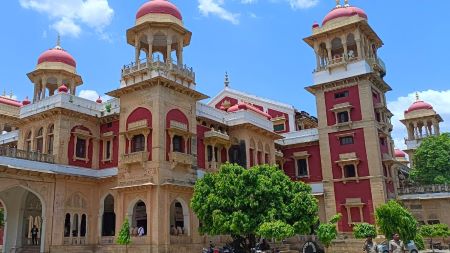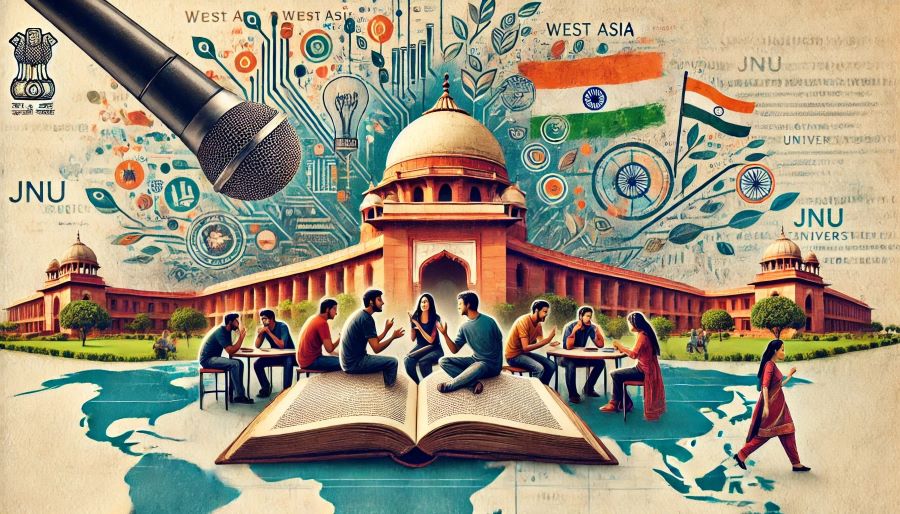The Decline of Indian Institutions: Leadership and Research in Crisis
I was motivated to write this article after reading UGC’s New VC Rules: Reform or Control?
A university is an institution of higher learning where knowledge is not just transmitted from teacher to student (as is done in primary and high schools) but also extended through research.
Great discoveries have been made in many universities around the world in science, history, economics, and other subjects, thereby advancing the boundaries of knowledge.
For instance, significant discoveries were made in the Cavendish Laboratory of the Physics Department at Cambridge University, UK, where great scientists like J.J. Thompson, Rutherford, Niels Bohr (who propounded the modern atomic theory), and others worked. Similar progress has occurred in many American, German, Russian, and other Western universities.
The Vice Chancellor of a university is the head of the institution and should be an eminent scholar, renowned for their knowledge and learning. Apart from administrative duties, the Vice Chancellor also chairs the selection committees for appointing professors and other teachers in various departments. These appointments should be based on merit, not political or other extraneous considerations. Only then can high standards be maintained in universities.

Allahabad University
In my alma mater, Allahabad University—once known as the “Oxford of the East”—there were eminent Vice Chancellors such as Dr. Ganga Nath Jha and his son Dr. Amar Nath Jha, who were renowned for their scholarship. However, standards later declined, and the university began to have mediocre individuals as Vice Chancellors.
At one point, Allahabad University even had a Vice Chancellor who was a teacher in an intermediate college and was appointed solely because of his connections with a state minister in Uttar Pradesh.
In most Indian universities, Vice Chancellors began to be appointed not for their scholarly achievements but for their proximity to influential politicians. This led to a decline in standards and a dilution of academic rigor.
In central universities (those under the Central Government, e.g., Jawaharlal Nehru University, AMU, Jamia Millia Islamia, etc.), Vice Chancellors are appointed by the Central Government and are often political appointees. Under BJP rule, institutions have been “saffronized,” including educational institutions. Consequently, Vice Chancellors of central universities in India are often appointed for their political leanings towards the ruling BJP rather than for their academic excellence.
 As for state universities, I can offer a personal example. Under Section 12 of the Uttar Pradesh State Universities Act, the Vice Chancellor of a state university in UP is appointed by the Chancellor (the Governor of the state).
As for state universities, I can offer a personal example. Under Section 12 of the Uttar Pradesh State Universities Act, the Vice Chancellor of a state university in UP is appointed by the Chancellor (the Governor of the state).
A committee of three persons—a High Court judge nominated by the Chief Justice, a person nominated by the Chancellor, and a person nominated by the Executive Council of the university—submits a panel of at least three names to the Chancellor, who selects and appoints one of them as Vice Chancellor.
I served as a judge of the Allahabad High Court and was appointed to this committee by the Chief Justice. What I observed was that, in every meeting, the Chancellor’s nominee suggested that each committee member recommend one name for the panel. However, the Chancellor invariably appointed the person recommended by their own nominee, who was always someone close to the ruling political party.
Realizing that I was being used, I resigned from the committee.
Many American universities have half a dozen Nobel Laureates in their faculty. On the other hand, Indian universities have produced only one scientist who was an Indian citizen—C.V. Raman. While three other scientists of Indian origin have won Nobel Prizes, they had become U.S. citizens.
Australia, with a population of 26.6 million, has 180 Fellows of the Royal Society (FRS), whereas India, with a population of 1.43 billion, has only 18.

As stated earlier, the fundamental difference between a high school and a university is that the latter not only teaches students but also extends the frontiers of knowledge through research.
The quality of research in Indian universities is abysmal, and much of it is plagued by plagiarism. Such “research” is often undertaken merely to secure jobs, not to contribute to the advancement of knowledge.
It is only when Indian scientists go to the United States or other Western countries that they achieve significant breakthroughs.
Read more on this topic.
This is the reality of Indian universities and their Vice Chancellors. ![]()
Also Read: A BLOW TO FREE DISCOURSE
Disclaimer : PunjabTodayNews.com and other platforms of the Punjab Today group strive to include views and opinions from across the entire spectrum, but by no means do we agree with everything we publish. Our efforts and editorial choices consistently underscore our authors’ right to the freedom of speech. However, it should be clear to all readers that individual authors are responsible for the information, ideas or opinions in their articles, and very often, these do not reflect the views of PunjabTodayNews.com or other platforms of the group. Punjab Today does not assume any responsibility or liability for the views of authors whose work appears here.
Punjab Today believes in serious, engaging, narrative journalism at a time when mainstream media houses seem to have given up on long-form writing and news television has blurred or altogether erased the lines between news and slapstick entertainment. We at Punjab Today believe that readers such as yourself appreciate cerebral journalism, and would like you to hold us against the best international industry standards. Brickbats are welcome even more than bouquets, though an occasional pat on the back is always encouraging. Good journalism can be a lifeline in these uncertain times worldwide. You can support us in myriad ways. To begin with, by spreading word about us and forwarding this reportage. Stay engaged.
— Team PT


